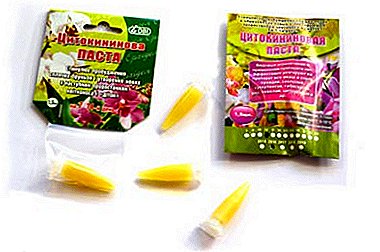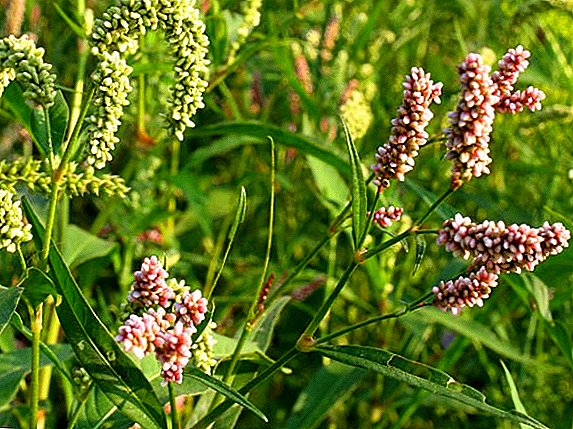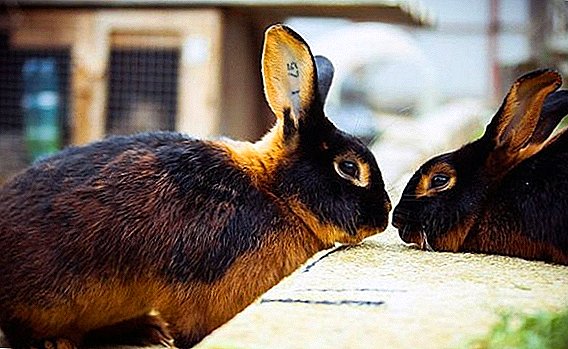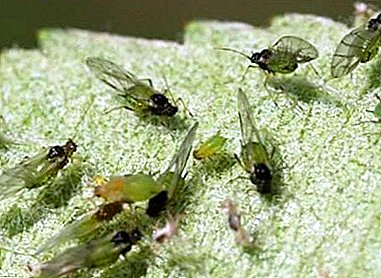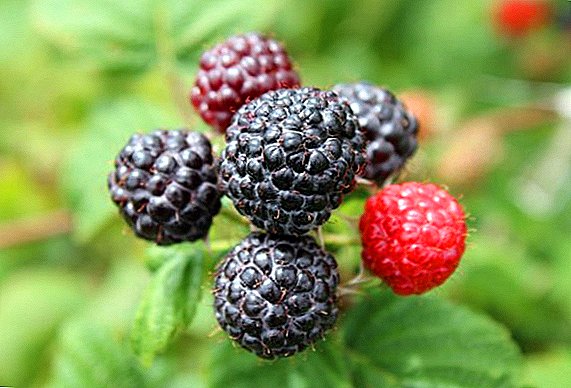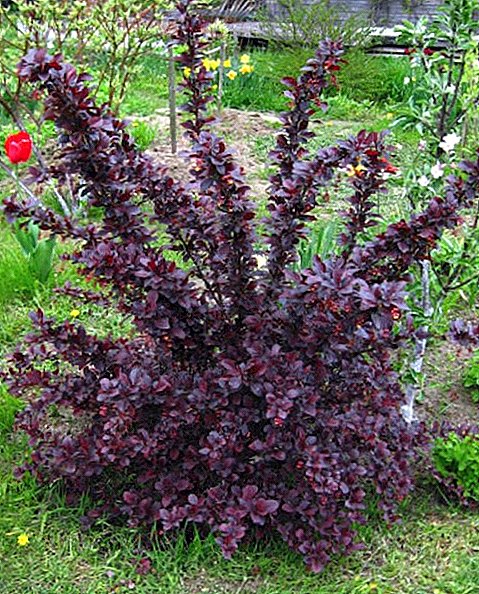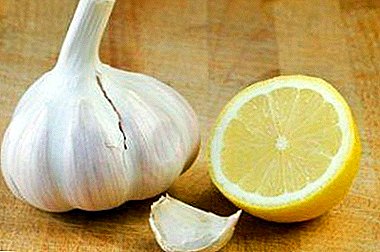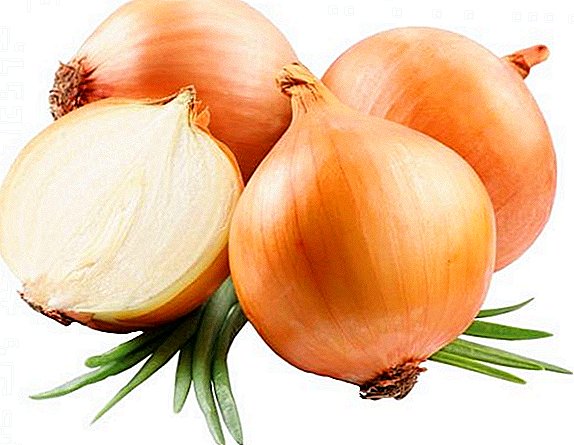 The early ripe hybrid "Golden Semko F1" differs in large roundish bulbs which ripen from seeds for one year. For the formation of their marketable weight is enough 80 days. At the same time, all vegetables are of the same size and regular shape with an average weight of about 100 g. The variety was created by domestic breeders. Many people call its main advantages high yield and endurance to growing conditions. We will tell about the features of sowing this onion further in the article.
The early ripe hybrid "Golden Semko F1" differs in large roundish bulbs which ripen from seeds for one year. For the formation of their marketable weight is enough 80 days. At the same time, all vegetables are of the same size and regular shape with an average weight of about 100 g. The variety was created by domestic breeders. Many people call its main advantages high yield and endurance to growing conditions. We will tell about the features of sowing this onion further in the article.
Variety description
"Golden Semko" favorably differs from other varieties by stable fruiting, good maturity and keeping quality. Externally, its bulbs are characterized by a thin neck, 2-3 light golden dry scales and a juicy white inside with a sharp, specific taste.
Did you know? At the time of Hippocrates and Avicenna, onions were attributed to patients as a cure for gout, rheumatism and obesity.The hybrid in the southern regions is cultivated as an annual crop, and in latitudes with a more severe climate, the turnips grow ripe from seed for the second year. Gardeners note that from the moment of emergence of shoots to mass lodging of foliage it takes from 2.5 to 3 months. During this period, the onion matures by 99%.
Regardless of weather conditions, from each square meter of bed you can collect more than 5 kg of crop. In this variety surpasses many of his fellows.

The variety adapts well to different soils and climates, is very responsive to generous watering and is practically not sensitive to various diseases and pests. During storage until the beginning of spring, no more than 5% of the collected turnips are subject to deterioration.
A distinctive feature of the variety is its small-star. This means that "Golden Semko" is not suitable for the cultivation of greenery, and this is its disadvantage.
Characteristics of onions and yield
The cost of onion seeds “Golden Semko” is much higher than that of other varieties. This is due not only to the endurance and yield of the hybrid. In fact, it is profitable to grow seedling way. Then each grain gives the maximum profit.
Did you know? The bulbs and garlic heads were found in the Egyptian pyramids. These vegetables were presented to the deceased pharaohs to please the goddess Isis. In those days, it was believed that commoners were not allowed to use these divine gifts of nature.Many gardeners practice winter sowing in order to receive friendly shoots in the spring. Then the harvest will be much earlier than usual and more abundant. Experienced housewives advise for this purpose to sow 10% more planting material, because not all grains will grow in harsh conditions.
Note that the subwinter seeding is also beneficial because the bulbs fully mature by mid-July. Therefore, harvesting can be started without waiting for the classic varieties to reach the destination. Also, "Golden Semko" can be grown from sevka. This is the second option to get earlier large bulbs.

On average, this domestic variety matures in 80-90 days after planting. But in the southern regions the harvest will reach faster than in the northern ones. But its quality will be exactly the same and depends solely on care.
If you choose a bed on good fertile soils and provide it with enough moisture, the plant will thank you for maximum yield. According to gardeners who have already dealt with Golden Semko, even in adverse conditions, the onion produces at least 3.5 kg of fruit per square meter. When complying with the agrotechnical requirements of growing a crop, this indicator can grow up to 5 kg.
Did you know? Onions are the most common vegetable in the world. According to the UN, the culture is grown in more than 175 countries, which is almost 3 times higher than the world record holder for the crop - wheat.
Selection of planting material
The success of onion cultivation, as well as other garden and garden plants, is 50% dependent on the choice of planting material. In this case, the hybrid can be rooted by sowing seeds or planting seedlings. Let us consider in more detail which Golden Semko is ideal for planting.

Seeds
If you prefer the seed method of planting vegetables, then for these purposes, choose only last year’s seeds. To check their quality, you must first select about a dozen and germinate on a damp cloth. When sprouts appear from them, be sure to count the number of germinated specimens. Planting material is suitable for planting when this number is not less than 7.
Be sure to appreciate the appearance of the seed. They must be black. But there are cases that store products that have undergone treatment with protective drugs are distinguished by multi-colored shells. These variations are characterized by better quality.
Find out what features of onion varieties "Stuttgart Riesen", "Exibischen", "Hercules", "Bamberger", "Sturon", "Red Baron", "Corrado", "Shetana", "Carmen", "Centurion", "Setton" ".
Sevok
When choosing planting bulbs, select specimens with a diameter of 10 to 30 mm. They should be characterized by:
- dense structure;
- lack of putrefactive stains, scratches and soft tissue;
- smooth surface;
- characteristic specific smell (it is unacceptable that the smell of rot, mildew or dampness comes from the planting material);
- the presence of rustling, which indicates a good drying Sevka;
- uniform color;
- the integrity of the husk (on it there should be no signs of the vital activity of rodents, spoilage and pests).

Sevok not necessarily buy. It can be successfully prepared at home. In this process, the correct temperature conditions for storage and good drying of the bulbs are important.
Important! Consider that extra touch to the planting material provokes its germination. Therefore, it is better not to touch sevok until spring.
Growing conditions
For good growth, a hybrid needs warmth, moderate humidity and enough light. Culture can withstand freezing temperatures, but if this period drags on for a long time, and the thermometer drops below 6 degrees, the turnips will lose their viability.
During the growth period, the vegetable is very sensitive to moisture deficiency in the soil. Therefore, experienced gardeners are advised to water the garden during the first months of onion ripening as it dries. It is recommended to stop moistening 30 days before harvesting.
Very good for the culture of regular loosening and weeding the site. After all, the neighborhood of weeds is very detrimental to the development of the hybrid, especially in the early stages of the growing season.

The optimal temperature for the growth of "Golden Semko" is + 12 ... +16 degrees Celsius. The process of germination of bulbs and grains begins at + 4 ... +5 ° С.
A characteristic feature of all varieties of onions is increased demands on lighting conditions. Note that in this regard, the culture was more capricious compared with root vegetables and cabbage.
Important! For onions, the neighborhood of beets, tomatoes, lettuce, all kinds of cabbage, carrots and chicory is favorable..
Soil and fertilizer
The more fertile the soil is, the more onion turnips you will collect from the garden. Therefore, the choice of a place for landing, take it with the utmost seriousness. Onion loves neutral and slightly alkaline substrates. It is better to choose elevated areas for this culture, avoiding cold lowlands and areas with dense heavy soils. In such conditions, the vegetable will not be able to fully develop, with the result that you get a bad harvest.

Experts advise to break the beds under the bow, observing the elementary rules of crop rotation. With this in mind, "Golden Semko" will go well after the growth of cucumber lianas and potato-fertilized manure.
Also experienced housewives for this culture choose a place under the pumpkin, zucchini, tomatoes and cabbage. At the same time, it is important to take into account the maturity of predecessors. It is important that they release the site for preparatory work as early as possible.
The habitual onion has many relatives - allium, shallot, leek, multi-tiered, shnitt, batun, slyzun.It is strictly not recommended to plant a hybrid on the same bed, where last year onions and garlic grew. This is bad for the development of turnips.
 Vegetable crop rotation table
Vegetable crop rotation table
To choose the right place, follow these tips gardeners:
- Avoid heavy clay substrates, preferring light, loose and fertile areas. The best are humus loams and humus-sandy soils.
- As precursors, choose early ripening plants, the cultivation of which provided for abundant organic fertilizer.
- Never add fresh manure to an onion bed. In such an environment, the bulbs will not have time to ripen and will be exposed to the constant risk of infection with putrefactive infections, especially since this is the right way to spread weeds in the garden.
- Fertilize the selected area with sand and humus at the rate of 2-3 kilograms per square meter of bed. Also in the autumn digging future turnips will not interfere with mineral fertilizer: 30 g / sq. m of superphosphate, 10 g / sq. m of ammonium nitrate, 15 g / sq. m potassium salt, 15 g / sq. m wood ash.
- Consider the location of groundwater. For the comfort of the bow, they should not be closer than 1 meter to the ground.
Important! In the shade of the bulb will be deformed, small and give a lot of arrows.The key to a good harvest is the timely processing of the selected place. This business should be dealt with immediately as soon as the earth is free from the preceding plants.

First you need to loosen the substrate to a depth of 5-6 centimeters. After 14 days, when weed shoots appear on the plot, deposit the superphosphate and dig the garden on the spade bayonet. It is desirable to provide along the perimeter of the site ditches for the discharge of melt water.
In the spring, when the season of field and garden works comes, evenly apply humus and mineral fertilizers to the site. Dig again and proceed to the organization of the ridges.
Learn what types of soil exist, how to properly fertilize the soil depending on the type, how to find out the level of soil acidity, how to apply various types of organic fertilizers.
Growing from seed to seedlings at home
Preparation of onion seedlings should be engaged in the last February week. Indeed, in the second decade of April, the seedlings need to be planted on the garden bed. Consider this process in stages.
Seed preparation
In order to make sure that the seed germinates well, a month before planting, select 10 grains for testing. Wrap them in gauze, napkin or damp cloth and hold for about 14 days.

It is important that throughout the entire period the nymph is in a humid environment. Then, when shoots appear, evaluate the results. The seeds that are not suitable for sowing are 3-5 germs when testing a dozen.
Did you know? A well-known expert on the history of cooking, as well as the author of the popular book "Gourmets of the Silk Road" - Laura Kelly, referring to the genetic analysis of onions, argues that the vegetable comes from Central Asia. According to her, he was widely distributed during the Mesopotamian period. There is also information from the Bronze Age on the use of onions in Europe.
Also at this stage is to take care of the disinfection of seeds. To this end, gardeners for 15 minutes, dipped fabric bag with seeds in hot water, and then place it for a minute in cold water. After this procedure, the black should lie in the same bag (it should be moistened periodically) for at least 24 hours at room temperature.
Other housewives advise to soak the seeds for 18 hours in ordinary water, and after that process them with a weak solution of potassium permanganate. To improve germination, growth stimulants can be used ("Kornevin", "Emistim", "Ecosil").

Content and location
The benefit of the seedling method is to save planting material, as well as to extend the growing season of the plant. It is better to use greenhouses and greenhouses for sowing Chernushka, but if such conditions are not available, a temporary bed can be arranged on a well-lit window sill.
In the latter version, you need to get a wooden box and a special substrate in advance, which is prepared in the same way as for tomatoes.
Did you know? On the world map, India and China are the leaders in onion production. In general, these countries account for half of the annual harvest collected on the globe, which reaches 70 million tons. By the way, only 10% of vegetables are exported, the rest is consumed at the local level.
Seed planting process
Sowing onion seeds begins with marking the beds. To this end, in the greenhouse area or in a container with the ground, furrows with a depth of no more than 2 cm should be made. Retreat 10 cm from the edge, and it is enough to leave 5 cm between the rows.

Then proceed to planting seeds, retreating from each other and a half centimeters. "Golden Semko" does not like zaguscheny, so rationally spend chernushku. In conclusion, do not forget to compact the soil and pour it. And in order to accelerate the emergence of seedlings, tie the box with plastic film and place in a warm place for germination.
Watch your garden bed. If small loops of a cotyledon appear on it, everything was done correctly. But if there are any roots on the surface, remove such specimens and re-sow the soil.
Find out when to sow onion seedlings.
Seedling care
Initially, a box with sown onions must be placed in a room where the temperature is not lower than 25 degrees. Then, before the first shoots appear, the capacity is transferred for 3-4 days to a cooler place, lowering the temperature to 10-12 degrees Celsius. During this period, fluorescent lamps will be very appropriate, prolonging the culture day and increasing growth.

With the advent of friendly shoots will need to begin their thinning. It is important that a distance of 1.5–2 cm is maintained between neighboring plants. On the 12th day, the onion will release the first leaves.
Did you know? World leader in consumption of onions is Libya. According to the latest UN data, in 2017 every average citizen of this country ate 34 kilograms of onions.Now it is important for the gardener to take care of regular watering of seedlings, loosening the soil and hardening the seedlings. In this case, you need to focus on the state of the bed. Do not overfill it, because the excess moisture will harm the vegetable crop. It is advisable to moisten the crops at least once a week with warm, settled water.
Gently pull out the weeds. If it muted the growth of onions or for some reason it does not develop well, immediately pour the culture with a solution of urea (3 g per 1 l of water).
And also take enough time to prepare the "Golden Semko" to disembark at a permanent place. To this end, in the warmest weather, expose the container with seedlings to fresh air. In the conditions of an apartment, an open window or balcony is perfect. The first days of the plant can not be left on the street for a long time. This is done gradually, starting with a 15-minute “walking”.
Video: how to grow onions from seed
Transplanting seedlings to ground
In the second half of April, onion seedlings can be transplanted into open ground. It is important that 50 days pass from the moment of sowing of Chernushka, and 3-4 leaves are formed on the shoots.
Of particular importance is the period of transplantation. With excessive heat, the onion will shoot, so do not delay the relocation of seedlings to the garden. It is better to do this as soon as the earth warms up well and stable warm weather is established on the street. Do not forget 2 weeks before the hardening of the Golden Semko begins.
You can grow onions in different ways, find out how to do it in the Chinese way.
In the selected area of the garden, level the ground first, make furrows up to 5 centimeters deep, retreating from each other by 20-30 centimeters. Then generously water the rows and seedlings. Now you can proceed to sorting it. Be sure to reject weak, damaged and poorly developed specimens.
Some gardeners are advised to cut off onion feathers and roots by a third. This is done in order to reduce the evaporation of moisture. Before transplanting each seedling extracted from the box must be dipped in the roots of a mixture of mullein and clay.

The plantation of planting seedlings suggests a distance of 8-12 cm between neighboring plants, as well as their depth 1 cm more from the previous planting.
After these manipulations, the furrows can be filled with the substrate and slightly compacted. The next day, be sure to pour a hybrid solution of humate. It will help the seedlings to take root quickly and painlessly. At the final stage, be sure to exaggerate the bed with peat.
Important! Unripe bulbs should be consumed as soon as possible, since they are not suitable for long-term storage. Better to put them on the winter seaming.
Cultivation from sevka in open ground
Many farmers consider the rassadny method irrational and troublesome and plant onion seeding immediately on the garden bed. But in the process of planting and then there are many nuances, the ignorance of which leads to a bad harvest and diseases of vegetable culture. Let's understand everything in order.

Site selection and soil preparation
The onion sets of the "Golden Semko" variety are excellent for cultivation in the open field and in the greenhouse. It is distinguished by its unpretentiousness and stable yield. In addition, culture does not need any specific conditions for growth. This method of planting onions is distinguished by the effective use of planting material, the cost of which is 4 times less than that of blacks.
With greenhouse cultivation, the hybrid will ripen sooner, but in such conditions it will need additional lighting. On the other hand, this option solves the problem of protecting young onions from night frosts. For this purpose, on open beds it is necessary to install temporary covering structures of metal arcuate rods and polyethylene.
Familiarize yourself with the technology of preplanting seeding, spring planting, autumn planting onions.
In any case, when choosing a seat for turnips, you need to consider:
- the degree of illumination;
- moisture level in the ground;
- the possibility of shading by neighboring cultures or structures, as well as flooding by rainwater;
- acidity and composition of the substrate.

For the Golden Semko, the south-eastern elevated area is ideal. It is better to choose those areas where the first snow comes down and there are no puddles in the thaw.
Important! It is categorically not recommended to bring in fresh organic matter when pudding the onion. In such a land, the plant is exposed to rot and death. The best option for fertilizer would be compost and mineral complex substances.
Seed preparation
Regardless of the origin of the seeding, before planting, it must be sorted out, discarding all the damaged and damp onions. The remaining mass is sorted. Experienced housewives advise to select:
- small specimens with a diameter of up to 5-8 mm;
- medium - with a diameter of 8 to 18 mm;
- large - with a diameter of up to 25 mm.

To increase the yield, experts advise a few days before planting to dry the sorted planting material at a temperature of + 35 ... +40 degrees. And just before planting the turnips, you need to soak for 20 minutes in a one-percent solution of copper vitriol. In no case do not cut the bulbous neck. At the same time you remove the young shoot, which will prevent the full vegetation of the plant.
The process of planting sevka in the ground
Before planting, be sure to loosen the bed and clean it from weeds. After that, flatten the ground and make furrows up to 5 cm deep. Leave between rows between 20-25 cm.
Important! Sevok, which managed to release the arrows during storage, can not be immediately planted in open ground. Otherwise, the plant will direct all resources not to the formation of turnips, but to the future flowering..Planting sevok need at a distance of 10-15 cm from each other. Consider, deeply deepened bulbs in the process of growth will become excessively elongated. A shallow surface landing will cause deformation of turnips. As a result, you get a poor-quality harvest, so experts advise to strictly follow the onion planting scheme.

When the entire sevok is planted, fill the grooves with soil and tamp lightly. From above, carefully walk along the bed of the rake, leveling the surface.
Experienced gardeners are advised to plan onion planting in overcast dry weather, preferably in the afternoon. By the way, sevok can be planted both in the spring (in the first decade of May), and in the fall (in the beginning of October).
Learn what are the rules for watering onions in the open field, what to do with the onion arrow, than to fertilize onions.
Watering
In the first two months of growth, the hybrid must very often be moistened. But it is important to take into account the peculiarities of climate and weather. The activity of the formation of the green mass and the development of the bulbous head depend on the amount of moisture received.
In a drought, watering needs to be frequent, and in rainy weather - stop. It is important not to allow the ground to dry bed. Otherwise, get faded lifeless turnips. For their richness, plan watering at least once a week. At the same time, use only warm distilled water.

With greenhouse cultivation, "Golden Semko" can be equipped with drip irrigation. Remember that excessive moisture, as well as its deficiency, will adversely affect the development of the vegetable.
Important! Keep in mind that the ground when planting onions (both spring and autumn) should warm up to at least 12 degrees. Otherwise, instead of a bountiful harvest, the plant will give a lot of dense arrows.
Soil loosening and weeding
Any onion varieties of domestic and foreign selection do not tolerate weeds in the neighborhood. If you ignore this requirement, then instead of juicy rounded turnips of the “Golden Semko” you will get a meager crop with poor commodity and taste. Therefore, do not be lazy to regularly loosen the soil and weed vegetable crops. This should be done to the extent necessary, depending on the degree of contamination of your garden.
For example, if fresh manure was scattered on it in the fall, weed vegetation would be a very frequent guest throughout the spring. If the bed is clean, it will not interfere with the sap to gently loosen the aisles, which will improve the aeration of the roots and will have a beneficial effect on the development of turnips.
Top dressing
The hybrid is very sensitive to the composition of the soil, so watch the condition of the plant. If it grows poorly and looks lifeless, immediate resuscitation is needed, which is carried out using a solution of urea (30 g per bucket of water).
Also does not interfere with watering based on organic fertilizers. For these purposes, mullein or chicken droppings are perfect (at the rate of a glass of infusion per bucket of water). Top dressing should be generously applied to the plot, especially if we are talking about weakened bulbs. At least 3 liters of nutrient should be applied to each square meter.
Important! In the first weeks, young onion seedlings must be protected from direct sunlight. For this ideal polyethylene shelter. But do not forget about regular airing, otherwise the plant will be covered with powdery mildew.Fertilize the onion bed three times during the growing season. The first procedure is carried out in the period of autumn preparation of the site for future sowing. The second - in the spring, and the third - 2 weeks after the landing of the set. If necessary, you can repeat the dressing, when the turnips reach the size of a walnut.
Video: how to feed onions
Pests, diseases and prevention
Despite the specific sharp taste of onions, he was vulnerable to the attacks of many harmful insects, as well as pathogenic microbes, so it makes sense to treat green feathers with copper sulphate solution (1 teaspoon of the substance dissolved in a bucket of water) for preventive purposes. Many gardeners are advised to add some liquid soap from the laundry soap. Such a consistency will delay the poisonous composition on the foliage for a long time and will not allow it to drain quickly.
Onion conditions are greatly influenced by weather conditions, which cannot be controlled, so learn in detail what are the methods of preventing and treating onions for diseases and pests.
Of all the insects living in the garden, the Golden Semko fears:
- covertly;
- caterpillars;
- moth;
- flies (sprout and onion);
- Medvedka;
- scoop (garden, winter and cabbage);
- tobacco thrips.
Video: preventive measures from onion flies
Also important is a deep digging of soil in the fall, timely weeding and loosening the beds. Indeed, many parasitic insects are faithful companions of weeds.
Did you know? In Senegal, the Yassa dish, which consists of vegetables, meat and onions, is particularly popular. But in fact - it is onions with onions, because this ingredient takes 90% of the total composition.In addition, a hybrid, despite the genetic resistance to various diseases, in an unfavorable environment may be exposed to infection:
- Fusarium;
- powdery mildew;
- peronospora;
- smut;
- rust;
- mosaic;
- jaundice;
- putrid infections (cervical, gray and white).

Bear in mind that fungal spores, viruses, and pathogenic microbes develop in acidic soil, so control the level of the pH reaction in your garden and, if necessary, alkalize with chalk.
It is very important that the diseased and damaged bulbs or seeds do not fall into the ground, for this purpose, carefully select, so as not to infect the whole area. In case of need for therapeutic measures, spray the planting with fungicidal preparations: "Alette", "Teldor", "Maxim", "Skor", "Infinito", "Consento", "Previcur".
After onion ripening, the answers to the following questions become important: when to dig an onion, how to store onions, how to braid a scythe of onions.
Harvesting and storage
The first signals of the upcoming harvest are faded leaves and dried bulbs neck. Pulling vegetables can usually begin in mid-July. It is better to do this in clear dry weather, because the crop should get into storage in a dry form. Make sure that in the process of cleaning the basket does not get rotten or damaged turnips. Also consider that even small scratches can cause further damage to the crop.

Do not rush to bring vegetables into the storage after harvesting. First, they need some time to dry. To do this, lay the onion in a well-lit area and leave for 2 weeks. Consider the case of rain film, because the crop in no case should not be wet.
Important! Be sure to stop watering onions a month before it is fully ripe. This is necessary so that the turnip can reach it. Otherwise, the plant abruptly goes into a state of rest, without completing the process of maturation. Such a crop will be absolutely not suitable for long-term storage..
Usually, some of the roots and faded leaves are removed from the bulbs before laying. Instances that are not completely dried out or are damaged by any kind should be used first.
"Golden Semko" perfectly preserved for 7 months. The main thing - to choose the right conditions for storage. The best place for these purposes is a well ventilated attic or storeroom.
It is advisable to spread the bulbs in one layer on a wooden floor. And in cramped conditions, you can use the box or make an onion braid (in the latter version, you do not need to cut the tops, but it must be completely dry).
Video: how to tie a bow into a bat for easy storage
Possible problems and recommendations
Growing onions is not an exception and is often accompanied by a number of problematic nuances. Here is a selection of the most common difficulties faced by novice and experienced gardeners:
- Poor harvest, small onions - this problem is often observed in areas where no regular crop rotation is performed, and the crop is planted in acidic or heavy soils. Save the situation can timely bait solutions of superphosphate, potassium sulfate and ammonium sulfate. Also does not interfere with the introduction of lime-fluff, old plaster, dolomite flour. Depending on the degree of oxidation of the soil, it will be necessary to add from 150 to 300 g of substance per square meter.

- Feathers begin to dry out prematurely and turn yellow - usually this problem occurs when the plant receives less moisture. You can solve it with regular watering. But do not overmoisten, otherwise the superficial shallow root system of the vegetable will start to rot.
Learn more about the causes of yellowing onions and their elimination.

- Onions do not have time to ripen until the harvest. This happens when the culture is constantly watered and fed. All these activities it is important to stop at least a month before harvesting the turnips.
- The foliage is covered with a gray bloom, it becomes lifeless and unsuitable - these are clear signs of powdery mildew and peronosporoza. They begin to progress when the onions are improperly watered. It is impossible for the water to fall on the plant. It needs to be poured under the root into the furrows, and not by sprinkling.
When large volumes of the crop is useful to know how to process onions and green onions.
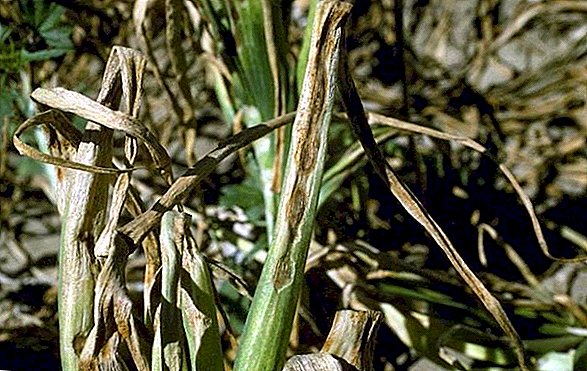
- Pale and thin feathers indicate a shortage of nitrogen-containing substances. In this case, it is important to water the bed with a solution of chicken manure or mullein.
- Faded or blackened tops of the foliage indicate fluoride deficiency.
- Wrinkled leaves with unusual yellowish color - onions should be fertilized immediately with potash substances.
- The appearance of fragility in feathers and white spot is a sign of magnesium deficiency.
- The drooping state of growing turnips, pale yellow leaves - a hybrid needs to be fed with a copper compound.
Important! It is recommended to cover podzimous plantings with spruce leaves when the first frosts strike. Previously, this can not be done, otherwise the bow will vpereet. In the spring, with the advent of the thaw, the shelter can be removed.

That's all the secrets of successful cultivation and increase the productivity of onions. If you do everything according to the above recommendations, your garden is not threatened with any disease, or pests, or problematic nuances. We hope our article will be useful to you in the cultivation of onions of this variety.





